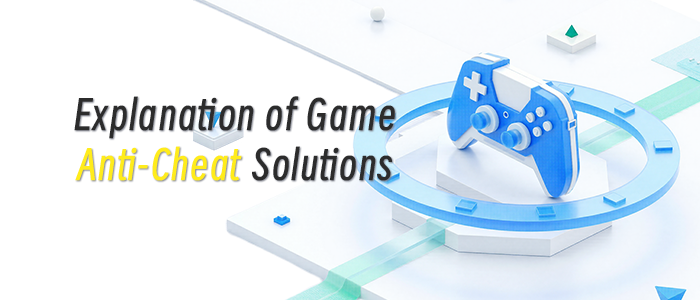[In this reprinted #altdevblogaday in-depth piece, Valve Software programmer Bruce Dawson continues his series on the floating point format by looking at float precision.] How much precision does a float have? It depends on the float, and it depends on what you mean by precision. Typical reasonable answers range from 6-9 decimal digits, but it turns out that you can make a case for anything from zero to over one hundred digits. In all cases in this article when I talk about precision, or about how many digits it takes to represent a float, I am talking about mantissa digits. When printing floating-point numbers you often also need a couple of +/- characters, an 'e', and a few digits for the exponent, but I'm just going to focus on the mantissa. Previously on this channel… If you're just joining us then you may find it helpful to read some of the earlier posts in this series. The first one is the most important since it gives an overview of the layout and interpretation of floats, which is helpful to understand this post.
1: Tricks With the Floating-Point Format – an overview of the float format
2: Stupid Float Tricks – incrementing the integer representation
3: Don't Store That in a Float – a cautionary tale about time
3b: They sure look equal… – special bonus post (not on altdevblogaday), also about precision
4: Comparing Floating Point Numbers, 2012 Edition
5: Float Precision—From Zero to 100+ Digits (return *this;)
What precision means For most of our purposes when we say that a format has n-digit precision we mean that over some range, typically [10^k, 10^(k+1)), where k is an integer, all n-digit numbers can be uniquely identified. For instance, from 1.000000e6 to 9.999999e6 if your number format can represent all numbers with seven digits of mantissa precision then you can say that your number format has seven digit precision over that range, where 'k' is 6. Similarly, from 1.000e-1 to 9.999e-1 if your number format can represent all the numbers with four digits of precision then you can say that your number format has four digit precision over that range, where 'k' is -1. Your number format may not always be able to represent each number in such a range precisely (0.1 being a tired example of a number that cannot be exactly represented as a float) but to have n-digit precision we must have a number that is closer to each number than to either of its n-digit neighbors. This definition of precision is similar to the concept of significant figures in science. The number 1.03e4 and 9.87e9 are both presumed to have three significant figures, or three digits of precision. Wasted digits and wobble The "significant figures" definition of precision is sometimes necessary, but it's not great for numerical analysis where we are more concerned about relative error. The relative error in, let's say a three digit decimal number, varies widely. If you add one to a three digit number then, depending on whether the number is 100 or 998, it may increase by 1%, or by barely 0.1%. If you take an arbitrary real number from 99.500… to 999.500… and assign it to a three digit decimal number then you will be forced to round the number up or down by up to half a unit in the last place, or 0.5 decimal ULPs. That 0.5 ULPs may represent a rounding error of anywhere from 0.5% at around 100 to just 0.05% at around 999. That variation in relative error by a factor of ten (the base) is called the wobble. Wobble also affects binary numbers, but to a lesser degree. The relative precision available from a fixed number of binary digits varies depending on whether the leading digits are 10000 or 11111. Unlike base ten where the relative precision can be almost ten times lower for numbers that start with 10000, the relative precision for base two only varies by a factor of two (again, the base). In more concrete terms, the wobble in the float format means that the relative precision of a float is usually between 1/8388608 and 1/16777216. The minimized wobble of binary floating-point numbers and the more consistent accuracy this leads to is one of the significant advantages of binary floating-point numbers over larger bases. This variation in relative precision is important later on and can mean that we 'waste' almost an entire digit, binary or decimal, when converting numbers from the other base. Subnormal precision: 0-5 digits Float numbers normally have fairly consistent precision, but in some cases their precision is significantly lower – as little as zero digits. This happens with denormalized, or 'subnormal', numbers. Most float numbers have an implied leading one that gives them 24 bits of mantissa. However, as discussed in my first post, floats with the exponent set to zero necessarily have no implied leading one. This means that their mantissa has just 23 bits, they are not normalized, and hence they are called subnormals. If enough of the leading bits are zero then we have as little as one bit of precision. As an example consider the smallest positive non-zero float. This number's integer representation is 0×00000001 and its value is 2^-149, or approximately 1.401e-45f. This value comes from its exponent (-126) and the fact that its one non-zero bit in its mantissa is 23 bits to the right of the mantissa's binary point. All subnormal numbers have the same exponent (-126) so they are all multiples of this number.
The binary exponent in a float varies from -126 to 127
Since the floats in the range with decimal exponent -45 (subnormals all of them) are all multiples of this number their mantissas are (roughly) 1.4, 2.8, 4.2, 5.6, 7.0, 8.4, and 9.8. If we print them to one-digit of precision then we get (ignoring the exponent, which is -45) 1, 3, 4, 6, 7, 8, and 10. Since 2, 5, and 9 are missing that means that we don't even have one digit of precision! Since all subnormal numbers are multiples of 1.401e-45f, subsequent ranges each have one additional digit of precision. Therefore the ranges with decimal exponents -45, -44, -43, -42, -41, and -40 have 0, 1, 2, 3, 4, and 5 digits of precision. Normal precision Normal floats have a 24-bit mantissa and greater precision than subnormals. We can easily calculate how many decimal digits the 24-bit mantissa of a float is equivalent to: 24*LOG(2)/LOG(10) which is equal to about 7.225. But what does 7.225 digits actually mean? It depends whether you are concerned about how many digits you can rely on, or how many digits you need. Representing decimals: 6-7 digits Our definition of n-digit precision is being able to represent all n-digit numbers over a range [10^k, 10^(k+1)). There are about 28 million floats in any such (normalized) range, which is more than enough for seven digits of precision, but they are not evenly distributed, with the density being much higher at the bottom of the range. Sometimes there are not enough of them near the top of the range to uniquely identify all seven digit numbers. In some ranges the exponent lines up such that we may (due to the wobble issues mentioned at the top) waste almost a full bit of precision, which is equivalent to ~0.301 decimal digits (log(2)/log(10)), and therefore we have only ~6.924 digits. In these cases we don't quite have seven digits of precision. I wrote some quick-and dirty code that scans through various ranges with 'k' varying from -37 to 37 to look for these cases.
No tags.






































